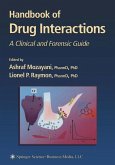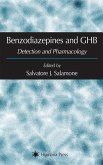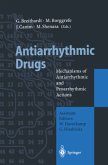A concise compilation of the known interactions of the most commonly prescribed drugs, as well as their interaction with nonprescription compounds. The agents covered include CNS drugs, cardiovascular drugs, antibiotics, and NSAIDs. For each class of drugs the authors review the pharmacology, pharmacodynamics, pharmacokinetics, chemistry, metabolism, epidemiological occurrences, adverse reactions, and significant interactions. Environmental and social pharmacological issues are also addressed in chapters on food and alcohol drug interactions, nicotine and tobacco, and anabolic doping agents.
Comprehensive and easy-to-use, Handbook of Drug Interactions: A Clinical and Forensic Guide provides physicians with all the information needed to avoid prescribing drugs with undesirable interactions, and toxicologists with all the data necessary to interpret possible interactions between drugs found simultaneously in patient samples.
Comprehensive and easy-to-use, Handbook of Drug Interactions: A Clinical and Forensic Guide provides physicians with all the information needed to avoid prescribing drugs with undesirable interactions, and toxicologists with all the data necessary to interpret possible interactions between drugs found simultaneously in patient samples.
"This book offers a comprehensive guide to drug interactions and has particular utility in both the educational and clinical environments. In the academic arena it offers some insights to the legal implications not discussed on other resources. This book would also make a valuable addition to the clinical library. . .It is organized by drug class, with the major classes represented, including CNS drugs, cardiovascular agents, antibiotics and nonsteroidal anti-inflammatory agents. A unique section covers environmental and social pharmacology issues with regards to drug interactions, including the influence of food, alcohol, tobacco, and anabolic agents. One of the more unique features of the book are the two final chapters that address litigation regarding drug interactions and psychotropic medications and crime. Tables are extensively and wisely used throughout to present large amounts of drug interaction data in an appropriate synopsis for quick reference. Illustrations of chemical structures to elucidate pharmacological interactions are appropriately used." -Doody's Health Sciences Book Review Journal
"The book is effective in gathering information about several classes of drugs in one volume...Recommended." -E-STREAMS
"...a welcome addition...I would recommend this text as a useful reference to students, researchers and physicians alike." - BTS Newsletter
"The book is effective in gathering information about several classes of drugs in one volume...Recommended." -E-STREAMS
"...a welcome addition...I would recommend this text as a useful reference to students, researchers and physicians alike." - BTS Newsletter








